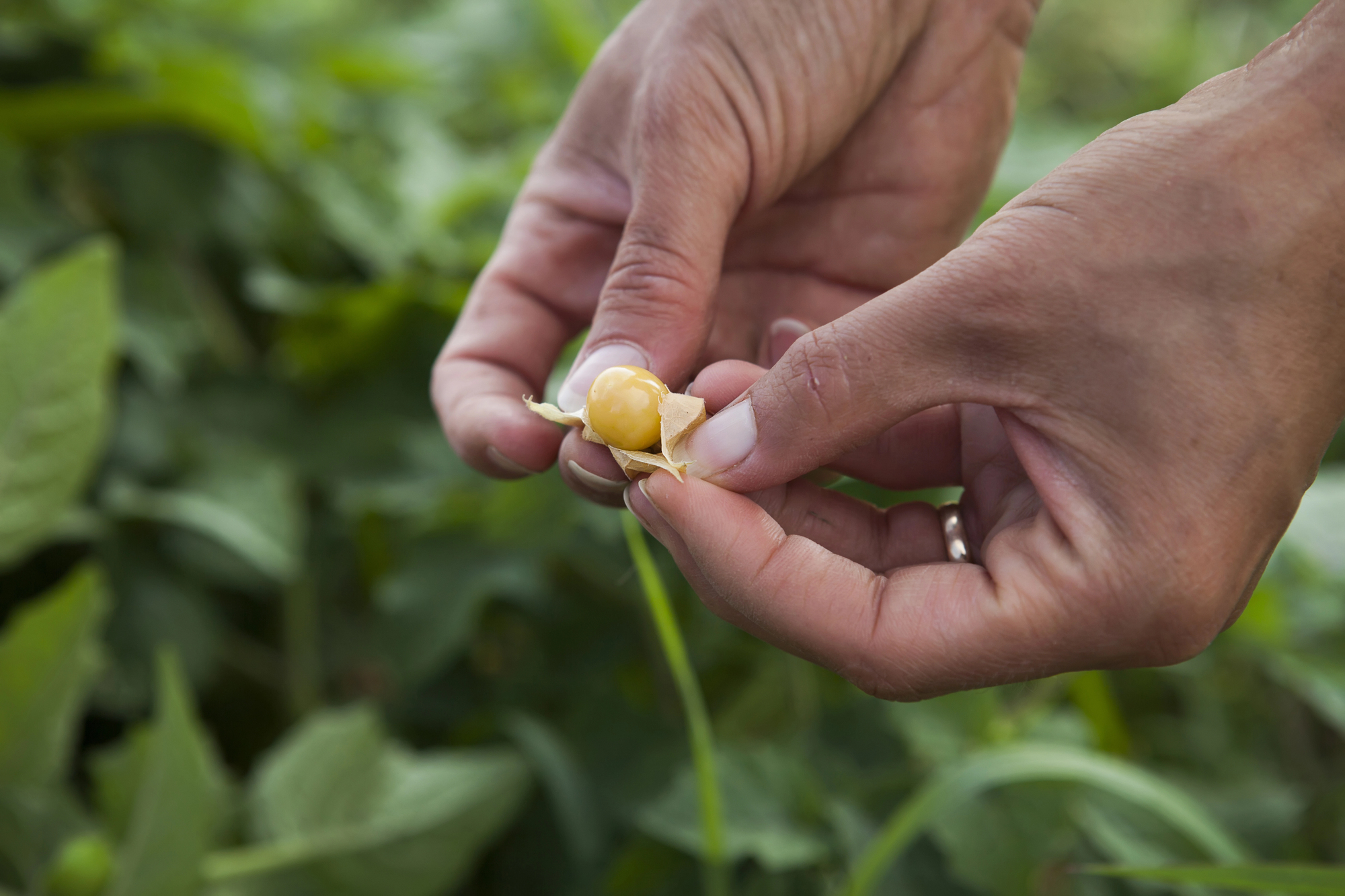Ground Cherry Donation Tracker
Quick Links: How & Where to Grow | Temperature | How to Care For | Harvest Signs | Harvesting | Pests | Companions | Preservation | Recipes | Michigan Tips | Fun Facts
🌱 How & Where to Grow Ground Cherries:
- Start seeds 8-10 weeks before last frost – they need a long season!
- Transplant when soil reaches 65°F and all danger of frost has passed.
- Space plants 2-3 feet apart – they sprawl like tomatoes.
- Plant depth: Set transplants deep like tomatoes for stronger root system.
- Sunlight: Full sun (6-8 hours) for best fruit production.
- Soil Type: Well-drained soil with pH 6.0-6.8.
- Soil Amendment: Moderate fertility – too rich produces leaves over fruit.
Ground cherries self-sow readily – let a few fruits drop and you’ll have volunteers next year!
🌡️ Temperature Guidance:
Transplant when soil 65°F. Frost sensitive. Thrives 65-75°F.
- Starting seeds: Need 75°F for good germination.
- Transplanting: Wait until nights stay above 55°F.
- Growing: Optimal temperatures 65-75°F.
- More cold-tolerant than tomatoes once established.
- Light frost kills plants but fallen fruits continue ripening.
Michigan’s moderate summers are perfect – ground cherries struggle in extreme heat!
💧 How to Care for:
- Consistent Moisture: Important during fruit development.
- Watering: 1-1.5 inches weekly – similar to tomatoes.
- Mulch: Heavy mulch keeps fallen fruits clean and makes harvesting easier.
- Support: Optional – cages keep plants tidy but they produce well sprawling.
- Fertilizer: Light feeding monthly – avoid excess nitrogen.
📏 Harvest Signs:
Fruits drop naturally with tan husks. Never eat green fruits!
- Ready when: Husks turn tan/brown and fruits drop to ground.
- Inside husk: Fruit changes from green to golden yellow.
- Don’t force: Fruits that don’t drop easily aren’t ripe.
- Warning: Green fruits are toxic – only eat fully ripe golden fruits!
- Peak harvest typically August through first frost.
The plant tells you when fruits are ready by dropping them – nature’s perfect timing!
🧺 Harvesting:
Gather fallen fruits daily. Check under mulch. Leave in husks until use.
- Daily collection prevents fruits from rotting on ground.
- Look carefully – fruits hide under leaves and in mulch.
- Shake plants gently to encourage ripe fruits to drop.
- Keep husks on for storage – remove just before eating.
- Rinse fruits after removing husks – they’re sticky!
🪲 Michigan Pests:
Generally pest-free! Occasional hornworms, Colorado potato beetles.
- Hornworms: Same as tomatoes – hand-pick these large caterpillars.
- Colorado potato beetles: May visit but prefer other nightshades.
- Flea beetles: Minor damage to leaves – rarely serious.
- Diseases: Less susceptible than tomatoes to most diseases.
- Husks protect fruits from most pest damage!
🫱🏽🫲🏼 Companions:
Good with tomatoes, peppers, basil, marigolds.
- Nightshade family members share similar care needs.
- Basil may improve flavor and deter pests.
- Marigolds help repel harmful insects.
- Avoid planting near brassicas or fennel.
- Give space – sprawling habit can overwhelm small plants.
🫙 Preservation:
Store in husks 2-3 months. Freeze whole. Make preserves.
- Fresh storage: In husks at room temperature 1 month, refrigerated 2-3 months.
- Freezing: Remove husks, wash, freeze whole on trays.
- Dehydrating: Makes raisin-like treats – very sweet!
- Preserves: Excellent in jams, jellies, and pie filling.
- Green fruits: Will ripen indoors if husks are turning color.
🧑🏽🍳 Recipes:
Ground cherry pie, salsa, jam, raw in salads, fruit tarts.
- Ground cherry pie – like a tropical version of cherry pie!
- Fresh salsa with ground cherries, tomatoes, and cilantro.
- Ground cherry jam – concentrated sunshine in a jar.
- Raw in fruit salads – sweet-tart tropical flavor.
- Upside-down cake featuring ground cherries.
✋🏼 Michigan Tips:
- Start seeds early – by March 1 for strong transplants.
- Use black plastic mulch to warm soil and speed growth.
- Let some fruits self-sow for easy volunteers next year.
- Protect from early frost to extend harvest – very productive!
- One plant produces 100-300 fruits in Michigan gardens.
- Consider greenhouse growing for earliest fruits.
🧠 Fun Facts:
- Also called husk cherries, cape gooseberries, or Physalis.
- Native to Central and South America, not Africa despite “Cape” name.
- Related to tomatillos – both have papery husks.
- Sweet-tart flavor combines pineapple, vanilla, and tomato notes.
- Pioneer women made “mock lemon pie” from ground cherries.
- The husks were used as natural wrappers for preserving fruits.
- Contains more antioxidants than many common berries!
- In some cultures, given as symbols of good luck and protection.


0 Comments